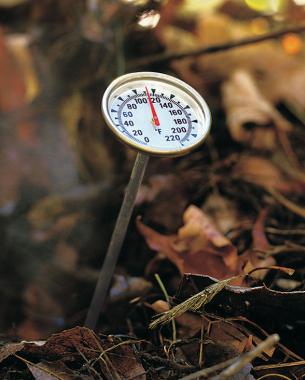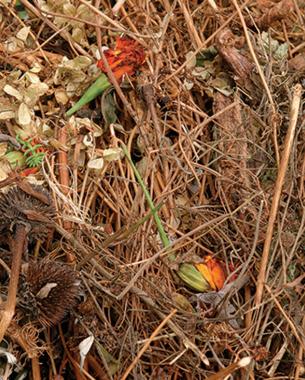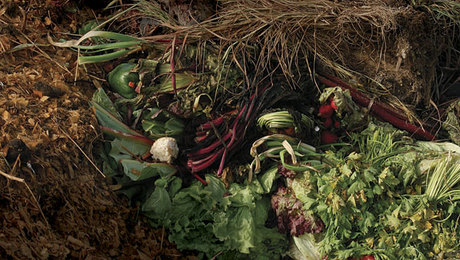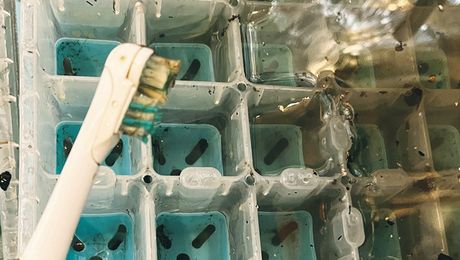Whether you want quick results or are content to let compost “happen” at its own speed, there is a method for you. Either way, you’ll get a terrific soil amendment for your garden.
Hot composting

Photo/Illustration: Scott Phillips
A hot pile requires enough high-nitrogen materials to get the pile to heat up. The ratio by volume should be 2 parts carbon to 1 part nitrogen. To aid in decomposition, keep the mixture as damp as a wrung-out sponge but not sopping wet. A variety of different-size materials (like twigs, stalks, straw, or hay) creates air pockets. You also increase the air/oxygen exchange every time you turn the pile.
If the pile is built correctly, it will heat up within 24 to 36 hours to the ideal temperature of 141°F to 155°F (weed seeds and disease pathogens die at these temperatures) and will maintain its temperature for several days to a week or longer. Use a compost thermometer to monitor the temperature. If the temperature starts to drop or if it gets hotter than 160°F, turn the pile again and add water. This should be done several times. A hot pile takes more effort but will produce compost more quickly—in several weeks to several months.
| 2 parts carbon | 1 part nitrogen | |
| Includes “brown” items like: • autumn leaves • wood chips • shredded paper |
Includes “green” items like: • grass clippings • fruit and vegetable waste • animal manure (but no pet or human waste) |
Cold composting

Photo/Illustration: Steven Cominsky
A cold pile requires minimal effort but may take a year or two before it produces compost you can use in your garden. This method of composting has two steps: Put your waste in a pile, and wait. You can think of cold composting as the add-as-you-have-materials pile. The time needed to have finished compost is hard to estimate because it depends on the materials in your pile and the size of the particles. The smaller the particles, the faster they will break down. Do not put in weeds that have gone to seed or diseased plants. Without high temperatures to kill off weed seeds or disease pathogens, you will be spreading these bad guys around your landscape.

















Comments
Log in or create an account to post a comment.
Sign up Log in